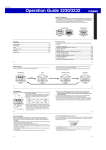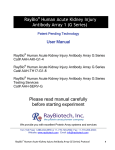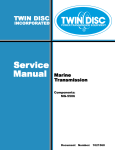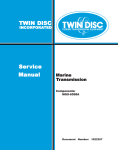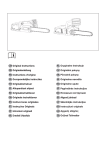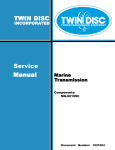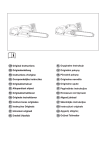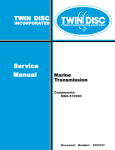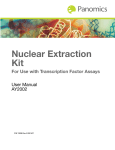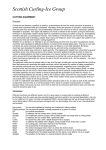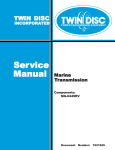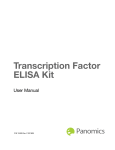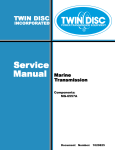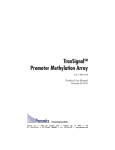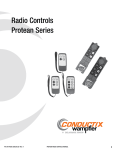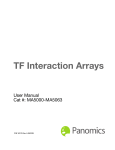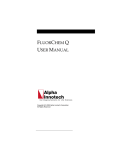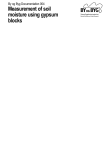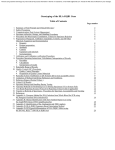Download EMSA "Gel Shift" Kit
Transcript
EMSA "Gel Shift" Kit User Manual AY1XXX P/N 13009 Rev. C 090508 DRAFT September 5, 2008 11:40 am EMSATtile.fm Panomics, Inc. EMSA "Gel Shift" Kit User Manual Copyright © Copyright 2008, Panomics, Inc. All rights reserved. Trademarks Procarta is a registered trademark of Panomics, Inc. Mini-PROTEAN and Mini Trans-Blot are registered trademarks of Bio-Rad Laboratories, Inc, FluorChem is registered trademark of Alpha Innotech, Hyperfilm and ECL are trademarks of GE Healthcare Companies, Biodyne is a registered trademark of Pall Corporation, Whatman is a registered trademark of Whatman International LTD. Citing Panomics in Publications When describing a procedure for publication using this product, we would appreciate it if you would refer to it as the EMSA Kit from Panomics. If a paper cites our EMSA product and is published in a research journal, the lead author(s) may receive a travel stipend for use at a technology conference or tradeshow by sending a copy of the paper to our technical support group at [email protected] or via fax at (510) 818-2610. Disclaimer Panomics, Inc. reserves the right to change its products and services at any time to incorporate technological developments. This manual is subject to change without notice. Although this manual has been prepared with every precaution to ensure accuracy, Panomics, Inc. assumes no liability for any errors or omissions, nor for any damages resulting from the application or use of this information. DRAFT September 5, 2008 11:40 am EMSATtile.fm About the User Manual About the User Manual Who Should Read Anyone that has purchased an EMSA “Gel Shift” Kit from Panomics to measure the this Manual binding activity of a specific TF from nuclear extracts. This manual provides the following: ♦ Kit contents and storage conditions ♦ Assay procedures ♦ Troubleshooting Safety Warnings CAUTION All chemicals should be considered potentially hazardous. We recommend that and Precautions this product and its components be handled by those trained in laboratory techniques and be used according to the principles of good laboratory practice. Note This product is intended for research use only. It is not for diagnosis of disease in humans or animals. For More For information about the products mentioned in this manual, visit our website at Information www.panomics.com. EMSA "Gel Shift" User Manual Page 3 About the EMSA “Gel Shift” Kit About the EMSA “Gel Shift” Kit Introduction to Panomics’ Electrophoretic-Mobility Shift Assay (EMSA) Kits are useful tools for Panomics’ EMSA identifying proteins that interact with DNA. This rapid technique is based on the Kits separation of free DNA from protein/DNA complexes due to the differences in their electrophoretic mobility in native (non-denaturing) polyacrylamide gels. When a protein binds specifically to a labeled dsDNA sequence, it migrates slower than non-bound dsDNA in a polyacrylamide gel, thus resulting in discrete bands corresponding to the individual protein/DNA complex. A typical EMSA experiment is performed by incubating a biotin-labeled transcription factor (TF) Probe with treated and untreated nuclear extracts. The protein/DNA complexes are separated on a non-denaturing polyacrylamide gel. The gel is transferred to a nylon membrane and detected using strepatvidin-HRP and a chemiluminescent substrate. The shifted bands corresponding to the protein/DNA complexes are visualized relative to the unbound dsDNA. The bands are visualized after exposure to film or chemiluminescent-imaging system (Figure 1). For more specific binding, you may wish to add unlabeled specific dsDNA probe (cold probe; provided) to the protein/DNA reaction mixture which competes with the labeled dsDNA probe (biotin-labeled probe) for binding to the protein. This causes the labeled probe to migrate to the bottom of the gel and reduces the intensity of the shifted band. Panomics’ EMSA Kits are suitable for validation of results obtained using Procarta® Transcription Factor Assay, Protein/DNA Arrays (Cat. #s MA1010 to MA1015) or to validate binding activity of a specific transcription factor (protein) to DNA. Enough reagents are provided to perform 25 binding reactions. Panomics' TF EMSA Kits measure the activity of specific transcription factors in nuclear extracts. The assay is highly specific, precise, and requires 4-8 µg of protein/well. Panomics currently offers more than 400 EMSA assays. For a complete list of available EMSA Kits, visit www.panomics.com. 1 2 3 4 Figure 1: Example EMSA image. Lane 1: Labeled EMSA Probe only with no sample, Lane 2: Labeled EMSA Probe with untreated sample. Lane 3: Labeled EMSA Probe with treated sample. Lane 4: Treated sample with cold and labeled EMSA probes. Page 4 EMSA "Gel Shift" User Manual Panomics’ EMSA Kit Contents and Storage Conditions Panomics’ EMSA Kit Contents and Storage Conditions Kit Contents and The EMSA Kit contains the following components. Refer to the product insert for Storage quantities and details of components supplied. If stored properly, reagents have a shelf-life of 6 months. Box 1 is shipped on dry ice. Please store at -20°C upon receipt Box 1 Components Description Volume Storage 5X Binding Buffer Poly d(I-C) Aqueous buffered solution for TF binding 50 µL –20°C Used in TF binding reactions to act as competitor to TF Probe 25 µL –20°C Loading Dye Dye for loading samples and monitoring electrophoresis and transfer 60 µL –20°C 2X Blocking Buffer Aqueous buffer for blocking during detection 50 mL –20°C Control Nuclear Extract Nuclear Extract prepared from HeLa cell line for use with control probe and cold control probe 5 µL –20°C Control Probe Control reagent 10 µL –20°C Cold (unlabeled) Control Probe Control reagent 10 µL –20°C Distilled H20 Distilled, purified water 500 µL –20°C Box 2 is shipped on blue ice. Please store at -4°C upon receipt. Box 2 Components Description Volume Storage Solution I Chemiluminescent detection reagent (1 mL) 1 mL 4°C Solution II Chemiluminescent detection reagent (1 mL) 1 mL 4°C Solution III Chemiluminescent detection reagent (8 mL) 8 mL 4°C Streptavdin-HRP Conjugate Used for detection of biotinylaled oligo on membrane (100 µL) 100 µL 4°C 10X Detection Buffer Aqueous buffer for detection step (10 mL) 10 mL 4°C 10X Wash Buffer Aqueous buffer for washing after addition of streptavidin-HRP (30 mL) 30 mL 4°C Plastic Pouch is shipped on dry ice. Please store at -20°C upon receipt. Plastic Pouch Description Volume Storage TF Probe TF-specific Probe, biotinylated 1 vial –20°C Cold (unlabeled) TF Probe TF-specific Probe for use in competition assay 1 vial –20°C EMSA "Gel Shift" User Manual Page 5 Panomics’ EMSA Kit Contents and Storage Conditions Required Equipment and Materials Not Provided Reagents Item Source 30% Acrylamide/Bis Solution Bio-Rad P/N 161-0156 Glycerol Sigma P/N G5516 Ammonium Persulfate (APS) Bio-Rad P/N 161-0700 TEMED Bio-Rad P/N 161-0800 10X TBE Stock Solution (1.0 M Tris, 0.9M Boric Acid 0.01 M EDTA) Invitrogen P/N 15581-044 Nuclear Extraction Kit Panomics P/N AY2002 DC Protein Assay Kit, Protein Determination Kit Bio-Rad P/N 500-0122 Item Source Electrophoresis Unit Mini-PROTEAN® II (P/N 165-2944 from Bio-Rad) Electroblotting Device Mini Trans-Blot® (P/N 170-3930 from Bio-Rad) Dry Oven Major Lab Supplier UV Cross Linker (optional) Stratalinker® (P/N 400071 from Stratagene) Chemiluminescent Imaging System (optional if using X-Ray film) FluorChem® From Alpha Innotech Rotating shaker Major Lab Supplier Thermal cycler Major Lab Supplier Item Source Blotting Paper Whatmann® 3MM Paper X-Ray Film (optional if using Chemiluminescent Imaging system) Hyperfilm™ ECL™ (P/N RPN3114K from GE Healthcare) Positively Charged Nylon Membrane, 0.45 µm Biodyne® B, (P/N 60201 from Pall) Equipment Materials Page 6 EMSA "Gel Shift" User Manual Guidelines for Assay Design and Analysis Guidelines for Assay Design and Analysis Preparing Samples The protein concentration of the nuclear extract inputs should be at least 1 µg/µL. If the samples can not reach this minimum concentration, you may need to prepare new nuclear extracts. You can either increase the number of cells used during the process or use less Buffer B when the pellet is resuspended during the final incubation step of the nuclear extraction process. General Guidelines ♦ Read this user manual and all product inserts before performing the assay. ♦ Store all reagents at the recommended temperatures. ♦ Use Panomics’ Nuclear Extraction Kit for best results. Assay Procedures Before You Start ♦ ♦ Thaw Positive Control and sample nuclear extracts on ice. Thaw TF-Specific Probe and TF-Specific Cold Probe on ice. Preparing Nuclear We recommend using a commercially available kit, such as Panomics’ Nuclear Extracts Extraction Kit (P/N AY2002). Please note that the provided control nuclear extract is a positive control only when used with the supplied control probe. ♦ We recommend a minimum of 4 µg of nuclear extract per lane and loading multiple wells with varying concentrations to determine the optimal nuclear extract concentration. ♦ You will need adjust the amount of nuclease free water accordingly so that the total volume of nuclear extract and nuclease free water is no more than 6 µL. ♦ When measuring protein concentration, we only recommend using the DC Protein assay from Bio-Rad (Lowry assay) when used in conjunction with our Nuclear Extraction Kit. Forming TF-DNA Complexes Forming TF-DNA complexes: Step Action 1 Prepare nuclear extract 2 For each nuclear extract sample, combine the following components into a sterile 0.5-mL microcentrifuge tube (PCR tube). • 2.0 µL Nuclear Extract (at a concentration of 2 µg/µL) • 1.0 µL Poly d(I-C) (1 µg/µL) • 2.0 µL of 5X Binding Buffer • 4.0 µL nuclease-free water Mix above reagents and incubate at RT for 5 minutes 3 EMSA "Gel Shift" User Manual Add 1.0 µL of TF Probe and proceed to step 6. Total volume should be 10 µL. Page 7 Assay Procedures Forming TF-DNA complexes: (continued) Step 4 Action (OPTIONAL) If a competition assay is desired (see Figure1, Lane 4), follow steps 4 and 5. • 2.0 µL Nuclear Extract (at a concentration of 2 µg/µL) • 1.0 µL Poly d(I-C) (1µg/µL) • 2.0 µL of 5X Binding Buffer • 2.0 µL nuclease-free water Mix and incubate 5 min at room temp 5 Add 2.0 µL Cold TF Probe to the above mixture and incubate for 5 minutes at RT. Then add 1.0 µL of labeled TF Probe and proceed to Step 6. 6 Incubate samples at 15°C for 30 min in a thermal cycler Gel Preparation Non-Denaturing Gel Step 1 Action Prepare and cast a 6.0% non denaturing polyacrylamide gel. Be sure to dilute solutions/buffers, as described in the Appendix. Mix the following components into a sterile 50-mL centrifuge tube (add in order listed): • 1 mL of 10X TBE • 4 mL of 30% Acrylamide/Bis • 625 µL of 80% Glycerol • 14.375 mL of deionized, sterile water • 300 µL of 10% APS • 20 µL TEMED Total volume is 20 mL 2 Pre-chill 0.5X TBE to 4°C before running your gel. 3 Run gel in chilled 0.5X TBE for 10 min at 120V before loading samples into gel. Prior to loading your samples, flush the wells with a transfer pipet. 4 Mix samples with 1 µL of Loading Dye provided and load 10 µL of sample to each lane. 5 Run the gel at 4°C (in an ice bath or refrigerator) at 120V until the dye reaches 1 inch from the bottom of the gel (Approx. time: 50-55 min). Transfer Step 1 Action Presoak Pall Biodyne B nylon membrane in 0.5X TBE. Prepare four sheets of gel-sized Whatman 3MM paper (8 x 10 cm). Presoak two sheets of Whatman 3MM paper in 0.5X TBE. IMPORTANT Please ensure that only Pall Biodyne B nylon membrane is used. Any other membrane may cause high backgrounds 2 Page 8 After electrophoresis, carefully remove one glass from the gel. Cover with one sheet of dry Whatman 3MM paper and the gel will stick to the paper. Gently lift the Whatman paper and gel away from the glass plate and note the orientation of the gel. Add an additional Whatman paper and soak in 0.5X TBE. Sandwich the gel with the pre-soaked Biodyne B membrane and two sheets of presoaked Whatman paper then add the fiber pads on both ends. See illustration below EMSA "Gel Shift" User Manual Assay Procedures Step 3 Action Place the sandwich in an electoblotting device and fill tank with 0.5X TBE. Transfer for 30 minutes at 300mA. IMPORTANT Ensure that the sandwich is oriented properly. The Biodyne B membrane should be closest to the positive pole (red) and the polyacrylamide gel should be closest to the negative pole (black). See Figure 2 below. Figure 2 Red Fiber pad Whatman 3MM paper- 2 sheets Membrane Gel Whatman 3MM paper-2 sheets Fiber pad Black Immobilization ♦ and Detection 100 mL or 1X Blocking Buffer: To 50 mL of deionized water, add 50 mL of 2X Blocking Buffer provided. Mix well and store at 4°C ♦ 300mL of 1X Wash Buffer: To 270 mL of deionized water, add 30 mL of 10X Wash Buffer provided. Mix Well and store at room temperature ♦ 100mL of 1X Detection Buffer: To 90 mL of deionized water, add 10 mL of 10X Detection Buffer (provided). Mix well and store at room temperature. Step 1 Action After transfer, remove the membrane from the sandwich of Whatman paper and gel and place between two fresh sheets of Whatman 3MM paper. IMPORTANT If transfer was successful, the loading dye should be slightly visible on the membrane. 2 The oligos on the membrane can be fixed by baking the membrane for 1 hour in a dry oven at 80°C. Alternatively, the oligos can be fixed using a UV crosslinker for 3 min. If UV crosslinking, ensure that the side of the membrane that was closest to the gel is exposed to the UV light source. Note At this point in the experiment, you can choose to continue or stop at this point. The membrane is stable for several months if stored between Whatman paper and in the dark. 3 Transfer the membrane to a new container containing 20 mL of 1X Blocking Buffer. If more than 1 membrane was prepared, each membrane will need its own container. Lids from a 200 µL pipette tip box can be used for 8 x 10 cm blots. 4 Block the membrane by incubating at room temperature with the 1X Blocking Buffer for 15 min with gentle shaking. EMSA "Gel Shift" User Manual Page 9 Assay Procedures Step Action 5 Remove 1 mL of the 1X Blocking Buffer from the blot container and place into a clean microcentrifuge tube. Add 20 µL of Streptavidin-HRP to the tube and vortex for 10 seconds. 6 Transfer the diluted Streptavidin-HRP mixture to the container with the blot and continue shaking at room temperature for another 15 min. IMPORTANT When adding the mixture to the container, avoid pouring the contents of the microcentrifuge tube directly onto the membrane 7 Decant the diluted Steptavidin-HRP solution. Wash each membrane for 8 minutes, 3 times at room temperature with 20 mL of 1X Wash Buffer. 8 Decant any excess wash buffer and then add 20 mL of 1X Detection Buffer to each membrane and incubate at room temperature for 5 min. 9 Take a plastic sheet protector and cut the sheet protector so that the membrane fits between the inside of the pocket of the two sheets. Alternatively two pieces of transparency film can be cut and the membrane sandwiched between each piece. 10 Prepare 2 mL of working Substrate Solution for each membrane by mixing (in order): 200 µL Solution I with 200 µL Solution II, briefly vortex, then add 1.6 mL of Solution III and mix. 11 On a flat and even surface, remove the top plastic sheet of the “sandwiched” membrane and pipette 2 mL of the mixed working Substrate Solution onto each membrane. Replace the top plastic sheet and ensure that the substrate solution is evenly distributed over the membrane with no air bubbles. Incubate at room temperature for 5 min. IMPORTANT Remove excess substrate by gently applying pressure over the top sheet and using a paper towel to wipe up any excess fluid. 12 Expose the membranes using either Hyperfilm ECL (2-10 minutes) or a chemiluminescent imaging system (12-15 min), such as the FluorChem Imager from Alpha Innotech Corp. IMPORTANT Several different exposure times to film or the imaging system may be needed for an optimal EMSA image. Page 10 EMSA "Gel Shift" User Manual Troubleshooting Troubleshooting Possible Problems and Recommended Solutions Observation Possible Cause Recommended Action Weak or no signal on free probe Insufficient Transfer Follow instructions in the user manual for performing the assay. Exposure Time to Short Increase time of exposure Membrane is too dry Keep membrane moist during detection Samples overdeveloped Shorten the development time. Non-specific protein bound to membrane Increase blocking or washing times. Wrong type of membrane used Only use Biodyne B, a positively charged nylon membrane. Not enough protein used The amount of extract will vary according to the extract preparation, DNA binding affinity of the protein, and quality of the extract. We recommend using a minimum of 4 µg of nuclear extract protein should give a sufficient band shift result Insufficient protein Confirm the concentration of the protein assay using a Lowry assay. If needed, increase the amount of protein in the nuclear extract. We recommend preparing nuclear extracts with Panomics’ Nuclear Extraction Kit (P/N AY2002). Target protein not activated (induced) Review induction procedures. You may need to change cell lines, inducer, or induction conditions. There is no clear band in the lane Disassociation of protein and probe has occurred during running of the gel Keep all buffers and other components chilled while running the gel to minimize disassociation There are multiple bands in the lane Some non-specific binding of probes can occur Determine specific bands by performing competition reactions with supplied unlabeled probes. High background No Shift Observed EMSA "Gel Shift" User Manual Page 11 Contacting Panomics Contacting Panomics For ordering information or technical support, contact the appropriate resource provided below according to your geographical location. Location U.S. Corporate Headquarters Address Panomics, Inc. 6519 Dumbarton Circle Fremont CA 94555 USA Telephone 1.510.818.2600 FAX 1.510.818.2610 Email [email protected] Technical Support [email protected] or 1.877.726.6642 option 3 Ordering Information [email protected] Location European Headquarters Address Panomics Srl Via Sardegna 1 20060 Vignate Milano Italy Telephone +39.02.95.360.250 FAX +39.02.95.360.992 Email [email protected] Technical Support [email protected] Ordering Information [email protected] Location Asia Pacific Headquarters Address Panomics, Inc. 16F Gemdale Plaza Tower A, No. 91 Jianguo Road Beijing 100022 P.R. China Telephone +86.10.59208157 FAX +86.10.59208111 Email [email protected] Technical Support [email protected] Ordering Information [email protected] For an updated list of FAQs and product support literature, visit our website at www.panomics.com. Page 12 EMSA "Gel Shift" User Manual












